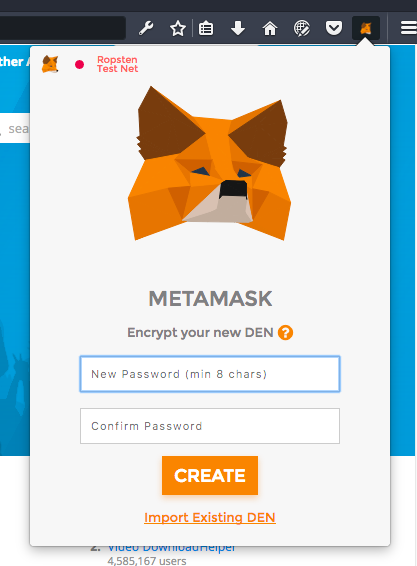

Now check that everything works fine, because it might be that a new Firefox will not be able to cope with the profile of an old Firefox. The profile that you were using before, with Debian's Firefox, will probably be named default-esr (if you had not renamed it in the past). The new, fresh profile will probably be named default-esr-1 (if you are using an ESR release Firefox). You'll be presented with available profiles. If you do not want that, but want to keep using your previous bookmarks, settings, extensions and so on, then terminate Firefox and start it like this: Upon first starting the new upstream Firefox, the new upstream Firefox will start with a new, fresh, empty profile.
#CAN T DOWNLOAD FIREFOX INSTALL#
Migrating from Debian's Firefox to Upstream'sįirst install Firefox as described in the chapter Installing Firefox -> From Mozilla binaries.

Since KeePassXC's server socket has been renamed, you need to tweak the workaround as explained in Therefore, add-ons which rely on it such as KeePassXC Browser don't work. Snap packages don't support native messaging. If you haven't already installed snapd, run sudo apt install snapd Mozilla provides an official Snap package for Firefox: Since the KeePassXC's socket has been renamed in KeePassXC 2.6, for this version you need to tweak the solution as described in comment #3 A workaround for KeePassXC is described in the Flathub forum. If you want to use your Firefox flatpak as the default DebianAlternatives browser ( x-200 & sudo update-alternatives -set x-Flatpaks don't support native messaging. If you have added /var/lib/flatpak/exports/bin to your PATH, you can also run it with the command If you haven't already set up flatpak, run sudo apt install flatpakįlatpak remote-add -if-not-exists flathub Mozilla provides an official FlatPak at FlatHub. If you want to use your manually installed Firefox as the default DebianAlternatives browser ( x-www-browser), run sudo update-alternatives -install /usr/bin/x-www-browser x-www-browser /opt/firefox/firefox 200 & sudo update-alternatives -set x-www-browser /opt/firefox/firefox For example: sudo ln -s /opt/firefox/firefox /usr/local/bin/firefox If you want to be able to launch Firefox from a CommandLineInterface, create a symlink to the firefox executable in /usr/local/bin/.

Replace /opt/firefox with the path to the directory where you extracted the archive.

MimeType=text/html text/xml application/xhtml+xml application/xml application/+xml application/rss+xml application/rdf+xml image/gif image/jpeg image/png x-scheme-handler/http x-scheme-handler/https Įxec=/opt/firefox/firefox -private-window %u Icon=/opt/firefox/browser/chrome/icons/default/default128.png In the ~/.local/share/applications directory (install only for the current user) In the /usr/share/applications directory (system-wide installation - requires Root privileges) in your home directory (install only for the current user)Ĭreate a file sktop (replace stable with beta or nightly if needed) with the contents below:.In the /opt directory (system-wide installation - requires Root privileges) Download the Firefox version you want directly from the official website.Mozilla distributes ready-to-use Firefox binaries for Linux on their website: On DebianUnstable, to install the Release version of Firefox, install the firefox package. Support for languages other than English is available in packages named firefox-esr-l10n*. They are instead supported for more than a year, updating with major security or stability fixes. ESRs are not updated with new features every six weeks. This installs the Extended Support Release of Firefox. On DebianStable, Install the firefox-esr package. Migrating from Debian's Firefox to Upstream's.


 0 kommentar(er)
0 kommentar(er)
